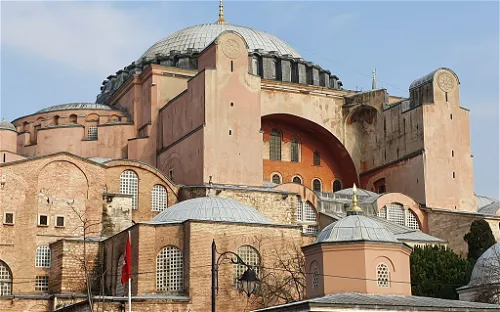Hagia Sophia and its collection
Hagia Sophia, also known as Agia Sophia, is a significant historical monument located in Istanbul, Turkey. It is the largest Byzantine monument in the former capital of the Byzantine Empire, Constantinople. The current building was constructed between 532 and 537, following a fire that destroyed the previous structure. The architects Anthemios of Tralles and Isidor of Milet designed the building, which is renowned for its nearly floating central dome.
Interior Design and Artwork
The interior of the Hagia Sophia is as impressive as its exterior. All surfaces inside the building are adorned with marble and golden mosaics. These mosaics depict images of saints and emperors, as well as intricate geometric patterns. The combination of these elements creates a visually stunning environment that reflects the rich history and artistic traditions of the Byzantine Empire.
Conversion to a Museum and Conservation Efforts
In 1934, the Hagia Sophia underwent a significant transformation when it was converted into a secular museum. This change allowed for the conservation of the surviving picture mosaics, which were uncovered by a team of American conservators. These mosaics, with a few exceptions, are now on display for visitors to appreciate, offering a glimpse into the rich artistic heritage of the Byzantine Empire.
History & Anthropology Religion Religious building













































